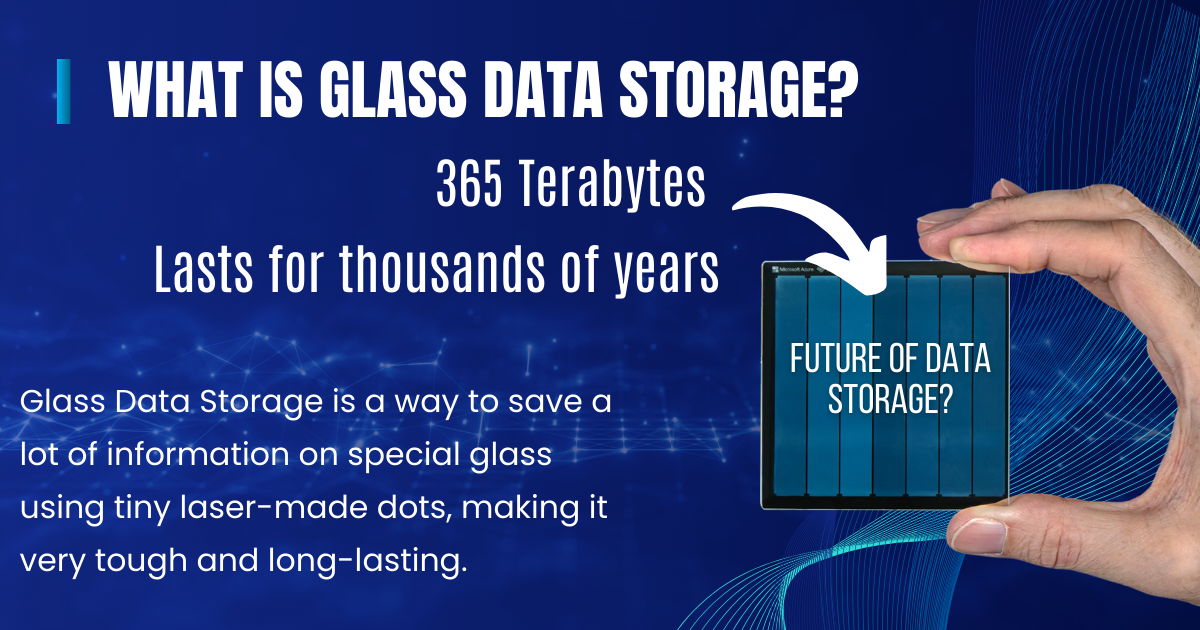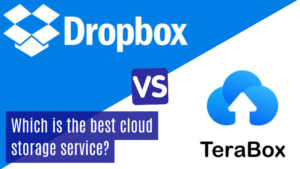What is Glass Data Storage?
You’re running out of space on your hard disk drive again, aren’t you?
Well here you can discover the solution, Glass Data Storage is an innovation that’s shaking up the world with Project Silica by Microsoft.
Glass Data Storage is a data storage method to save a lot of information on special glass using tiny laser-made dots, making it very durable and long-lasting.
This blog will show what is glass data storage and how this technology could save your digital life by offering a smarter storage solution.
Just imagine never losing a file again…. keep reading
Table of Contents

Key Takeaways
- Microsoft’s Project Silica is using glass to store data. It can even store a movie like “Superman” on a small glass piece. This shows how powerful and lasting this storage can be.
- Glass data storage can save huge amounts of information, like 365 terabytes on one small piece of glass. This could keep important things safe for up to 10,000 years or even longer.
- The technology uses lasers to write data in a durable type of glass. Even robots are being added to help manage stored info better.
- It’s much stronger against damage from heat, water, or scratches than other storage ways. Plus, it doesn’t use much power to keep the data safe.
- Soon, we might use tiny glass disks for everything from saving all our favorite songs and movies to keeping important documents secure for thousands of years.
Overview of Glass Data Storage Technology
Glass data storage is a cool way to save lots of information using special glass. It uses light from lasers to keep data safe for a very long time.
5D Optical Data Storage
5D Optical Data Storage is a big leap in saving and keeping data safe.
Imagine writing on special glass plates with lasers that can last almost forever. This method uses three layers of dots that a laser creates inside fused quartz.
These dots are tiny, and you can only see them with a strong microscope. The “5D” part comes from the way data gets stored using five different things: height, width, depth, and two more that involve how light moves through the glass.
Scientists at the University of Southampton first made this possible. They found out how to store huge amounts of data —like 360 terabytes—on one small piece of glass. That’s like holding thousands of movies or millions of songs on something that fits in your hand! This storage lasts much longer than CDs, DVDs, or magnetic spinning disks we use now.
Even better? It stays okay in heat up to 1,000 degrees Celsius and might keep data safe for billions of years if kept cool and dry. This tech could help save important stuff like global music vaults or even protect our digital heritage by keeping it in Arctic World Archives, far safer than current cloud infrastructures or energy-hungry servers.
Project Silica by Microsoft
Shifting to a new type of storage, Microsoft leads with Project Silica. This project turns glass into a storage hero. Think about it: storing tons of data on a small glass piece. It’s real and happening now.
Microsoft worked with Warner Bros to put the “Superman” movie from 1978 onto a quartz silica glass that’s only 75 x 75 mm and 2 mm thick. But don’t let its size fool you; it holds an impressive 75.6 GB.
This tech isn’t just for movies, though. Imagine keeping important things safe for super long—up to 10,000 years! That means your favorite songs or even whole libraries could last almost forever without getting lost or damaged over time like CDs or hard drives do now.
Plus, this all comes in at the energy-efficient end of things since reading the data back doesn’t need much power at all compared to traditional techs like magnetic media or even flash drives we use today.
With laser light and special tools like ultrafast laser writing and polarizers, they write info into fused silica—a kind of very tough glass—in layers that are both deep and wide but also super tiny; they call this technique eternal 5D because it changes how light moves through these layers when looked at under an optical microscope, allowing lots more data to fit in just one spot.

How is Glass Data Storage made?
Glass data storage changes how we keep digital data. It uses special glass and lasers to save a lot of information.
- Scientists pick a piece of durable glass. This glass can handle scratches, heat, and even getting wet.
- They use a very fast laser, called a femtosecond laser, to write data. This laser moves quickly and precisely.
- The laser creates tiny dots inside the glass. Each dot can hold lots of bits.
- These dots are in 3D space but have extra layers for more data – making it 5D optical data storage.
- A computer reads the data with another type of light beam. This light looks at the dots from different angles.
- Microsoft’s Project Silica has made these steps better, allowing over 7 TB of storage on one piece of glass.
- Thanks to this technology, these glass pieces last very long – up to 10,000 years without losing data.
Each step ensures that everything from your favorite songs to important documents can be kept safe for thousands of years – or more.
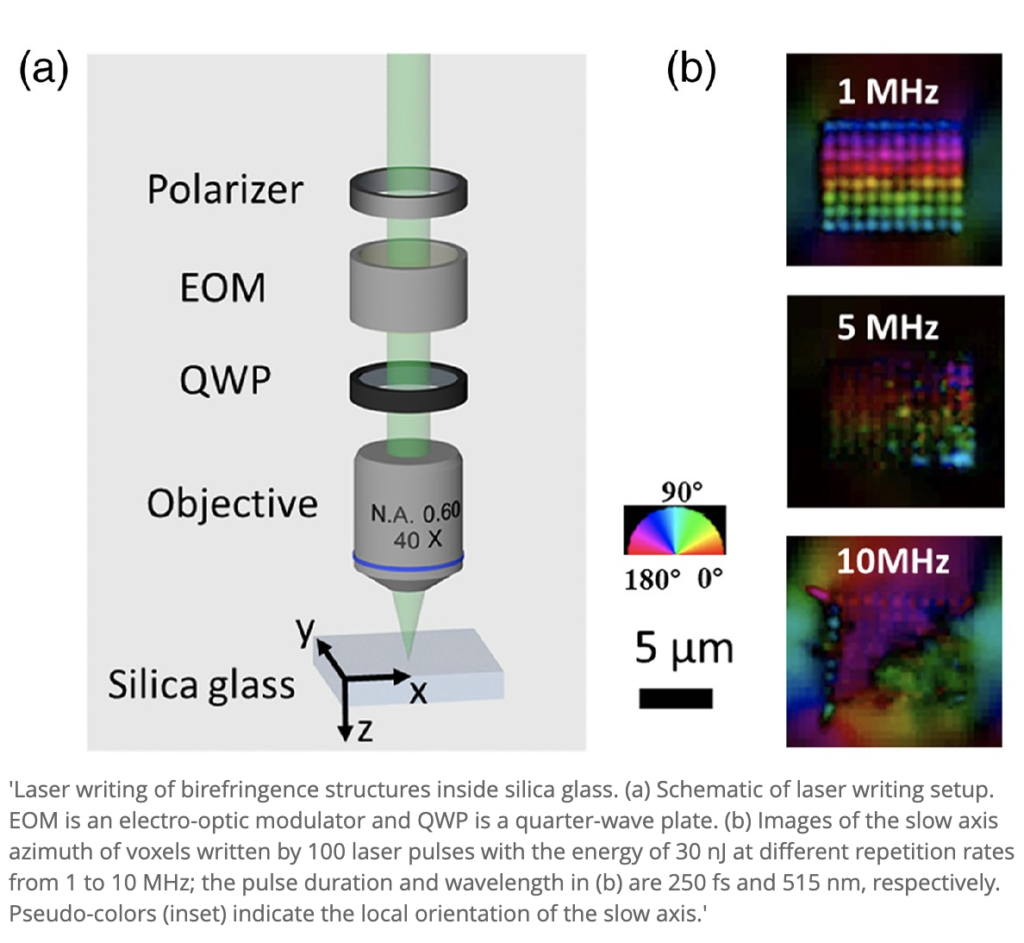
Caption and image credit: University of Southampton; Lei, Sakakura, Wang, Yu, Wang, Shayeganrad, and Kazansky
What are the Benefits of Glass Data Storage?
After learning how glass data storage is made, you’ll find that its benefits are quite impressive. This technology is a game changer for keeping information safe and intact over long periods.
It’s super strong against environmental dangers like floods or fires. Plus, it doesn’t need much power to keep cool, which means big savings on electricity bills.
Glass data storage can hold more info than traditional methods. Think of swapping out dozens of Blu-rays with just one piece of glass. Also, it lasts way longer without getting damaged or losing quality—imagine not worrying about your favorite songs or important documents fading away over time.
Glass data storage changes the game with its mix of durability and efficiency.
Spaces like the Global Music Vault plan to use this tech to save musical heritage safely in Norway where even Vikings would nod in approval at its toughness against nature’s worst.
Microsoft is even adding robots to make storing and finding stuff easier in their cloud service farms.
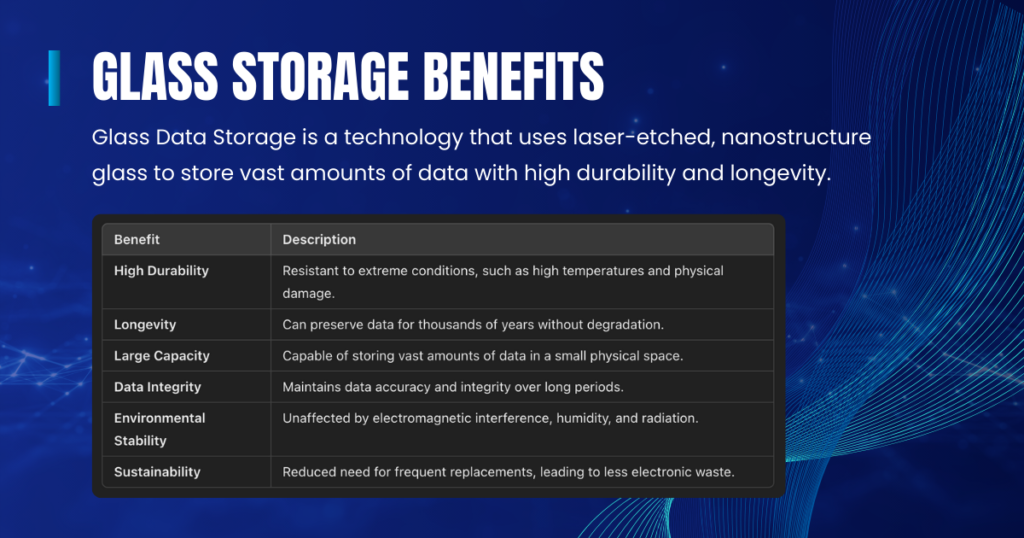
How Glass Data Storage Will Revolutionize the Industry of Data Storage
Glass data storage will change how we keep information safe and easy to get. It lasts a very long time and can hold a lot of data. This means your favorite songs, pictures, and documents won’t get lost over time.
Plus, you can store much more in less space! With glass storage, the future looks bright for keeping all our important stuff safe. So why not learn more about it?
Long-term Durability
Data can last in glass storage for up to 10,000 years. This means your stored information could outlive several gadgets and technology updates. Imagine storing something today and knowing it will still be there, safe and unchanged, far into the future.
Using a special process involving femtosecond-laser writing, this optical storage method encodes data in glass plates with incredible stability. These durable plates withstand various conditions that would ruin other forms of storage—like water damage or magnetic disruptions—ensuring your data is safe from typical environmental threats.
This unmatched durability comes from the chemical stability of the glass used in Project Silica by Microsoft. It’s designed not just for now but for centuries ahead. With each plate holding terabytes of information, you’re getting vast amounts of secure storage that’s both high-capacity and long-lasting.
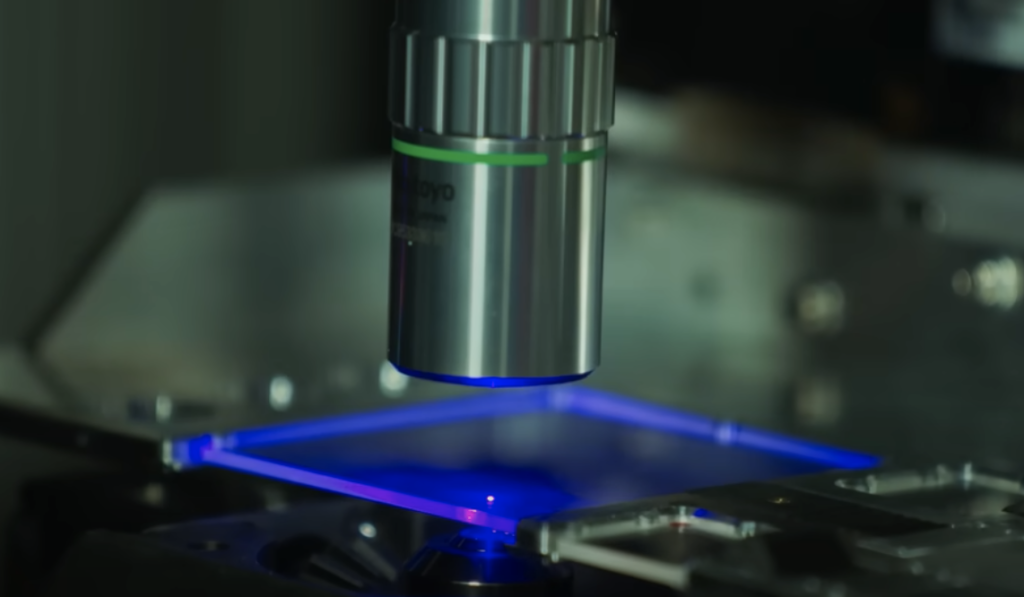
High Capacity Storage
Moving from the long-lasting nature of glass data storage, let’s talk about how much it can hold. A tiny glass piece, no bigger than a postcard and just 2 mm thick, can keep up to 75.6 GB of data.
That’s like storing 3,500 movies or 1.75 million songs on something you can hold in your hand! Companies are working hard to make this technology ready for everyone to use.
Think about having all the music you love and every movie you enjoy stored on one small glass disk. This isn’t a far-off dream; it’s becoming real with projects like Microsoft’s Project Silica.
They are trying out ways to save huge amounts of data safely for years without losing any bit of it. Soon, we might see these amazing disks everywhere – from libraries full of films to music collections that can last forever without taking up much space at all!
Conclusion – What is Glass Data Storage?
Glass data storage will change how we save information. This new tech lets us keep huge amounts of data safe for thousands of years – think Project Silica by Microsoft. Imagine storing all the books in a big library on just a few glass slides.
These slides won’t break down over time like other storage forms do. They can even survive disasters that would wipe out regular data centers. Soon, keeping our digital history could be easier and safer than ever before, thanks to these tiny but mighty glass pieces.
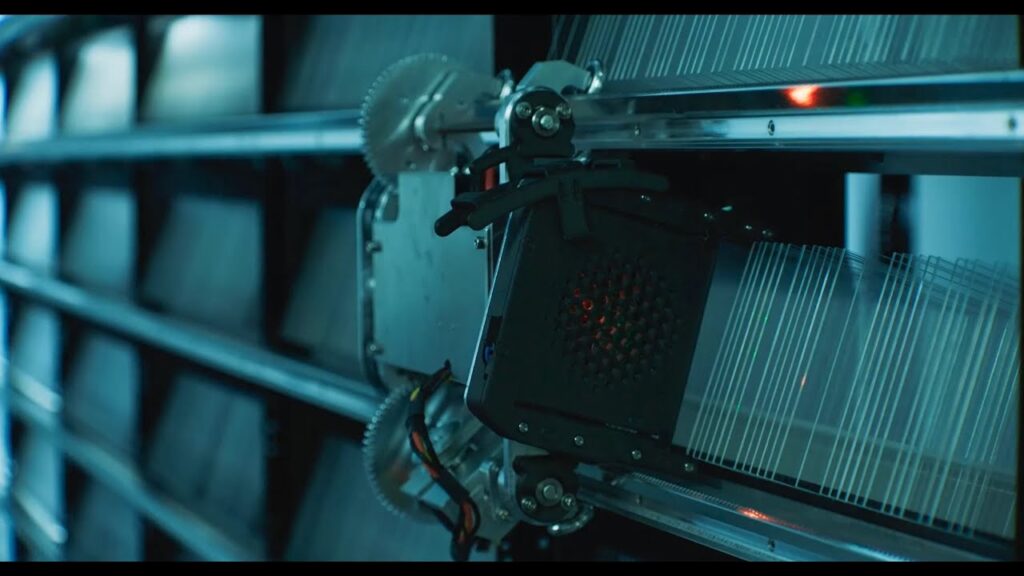
FAQs – Glass Data Storage
1. What is glass data storage?
Glass data storage uses a type of material, uniaxial anisotropic, to store data through changes in its optical properties. A laser beam alters the refractive index at precise points, creating a durable way to keep information.
2. How does it change the industry?
It offers a vast improvement over traditional magnetic storage systems. With its holographic and plasmonic properties, glass storage can hold more data in less space and lasts longer without damage from environmental factors.
3. Can I use it for commercial purposes?
Yes, you can! Managed service providers are beginning to offer this as part of their hardware solutions. It’s especially useful for businesses that need long-term, secure data preservation — think global seed vault but for digital information.
4. Is it better than current storage options?
Absolutely! Besides being almost indestructible and holding immense amounts of data, its unique makeup allows for faster access times and improved security features compared to existing magnetic or robotics-based systems.
5. Will robots manage these systems?
Indeed, robots play a crucial role in managing glass storage systems due to the precision needed in reading and writing data with laser beams. This automation ensures efficiency and reduces human error, making the whole process smoother.


